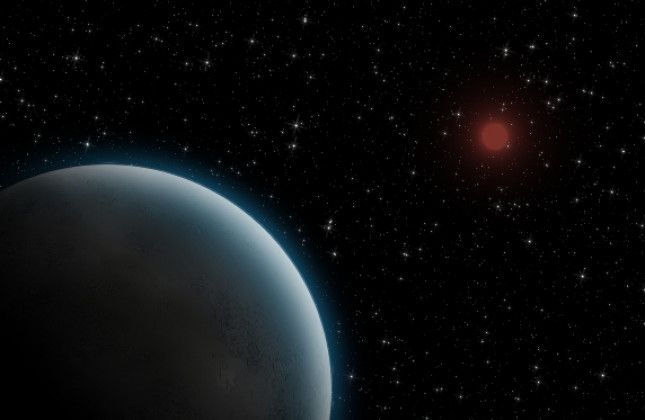Recently, astronomers have been finding protoplanetary discs around certain stars. Their discovery has helped kick off a new work in planetary formation theory. But planets aren’t the objects that form from discs of material in space. Moons do too. Now, scientists led by Dr. Tomas Stolker of Leiden University and his team have delved deeper into the characteristics of a “protolunar” disc surrounding a “super Jupiter” exoplanet about 500 light-years away.
The planet, GQ Lupi B, orbits its parent star on a path about 20 times wider than Jupiter does from the Sun. In addition, the planet is much heavier than our latest gas giant. Initially discovered in 2004, this exoplanet has been the center of lots of attention. Scientists have been trying to determine whether it was formed via a typical planetary formation process, which would indeed create a giant planet. Alternatively, it could have formed using a process similar to some star and wound up as an object known as a brown dwarf.
This increased interest has led to more data on GQ Lupi B. Dr. Stolker and his team collected some of that data using two instruments on the Very Large Telescope – NACO, a near-infrared imager and MUSE, a visible light spectroscope. Using NACO, the team took a look at the thermal profile of the disc surrounding GQ Lupi B. The surrounding disc is a much lower temperature than the planet’s atmosphere, leading the researchers to theorize that there might be a “cavity” in the ring where a moon is starting to coalesce. But it could also just be influenced by the magnetic field of the planet itself.
MUSE provided a different picture. With it, the researchers looked at H-alpha radiation, which allowed them to detect features in the planet’s atmosphere. They noticed that the planet is still growing, using either a supply of material from its own protolunar disc or grabbing material from its star’s protoplanetary disc.
Despite all the attention it has garnered, the study of GQ Lupi B still lacks a key component – the mid-infrared range. Those spectra would help astronomers understand the thermal properties of the disc and determine whether a moon indeed is forming there. Luckily, that wavelength is exactly what the James Webb Space Telescope hopes to begin monitoring soon. Unfortunately, the researchers will have to get in line to get time on the telescope, as it will be in extraordinarily high demand after numerous delays and cost overruns. But once it is fully operational, it should collect some additional light from this interesting system – and maybe even capture an image of an exomoon or two.
Learn More:
Astronomie.nl – Astronomers see disk around young super-Jupiter which may form moons
The Astronomical Journal – Characterizing the protolunar disk of the accreting companion GQ Lupi B?
UT – Here’s a First. Astronomers See a Moon Forming Around a Baby Exoplanet
UT – Astronomers see an Accretion Disk Where Planets are About to Form
Lead Image:
Artist’s impression of GQ Lupi B (front left) and its companion star.
Credit – Devon1980 via Wikimedia

